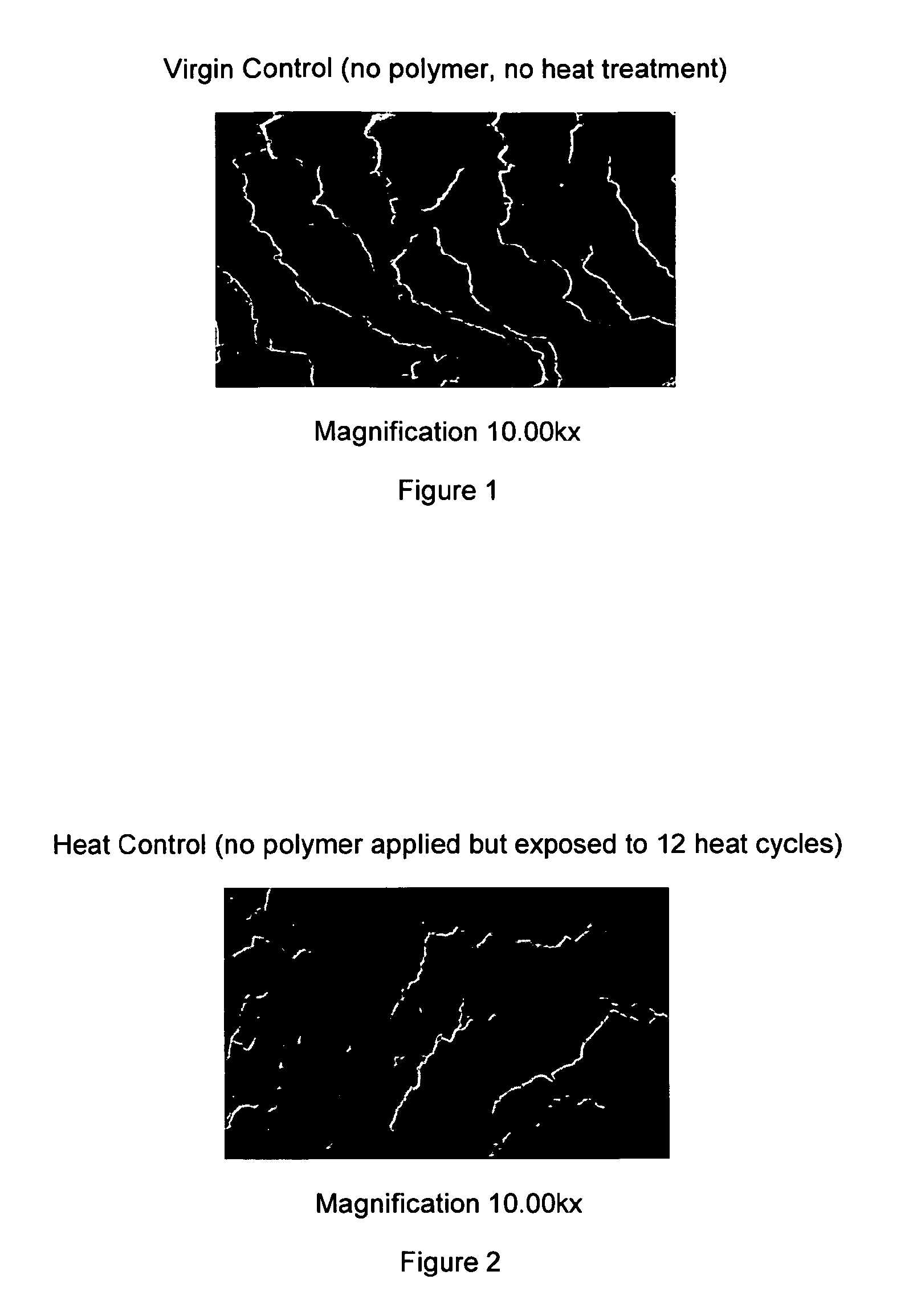Compositions and method for thermal protection of hair
a technology of compositions and methods, applied in the field of compositions, can solve the problems of significant damage to the cuticle, damage to the outermost layer of the hair shaft, and damage to the hair fiber,
- Summary
- Abstract
- Description
- Claims
- Application Information
AI Technical Summary
Benefits of technology
Problems solved by technology
Method used
Image
Examples
Embodiment Construction
[0013]As noted above, certain polymer systems containing acrylate monomers have been found that can stop or at least minimize the damage to hair normally associated with thermal processing. For purposes of this invention, thermal processing is any hair treatment where the hair is directly contacted with a hot surface. Some non-limiting examples of these processes are curling irons, and straightening irons. In an embodiment of the invention, the hair is contacted with a heated surface in which the heated surface has a temperature of greater than about 150° C. In another embodiment, the heated surface has or is heated to a temperature greater than about 200° C.
[0014]The polymers of this invention can be any type of polymers which is made of or modified to contain an acrylate monomeric repeat unit. The polymers of this invention can be anionic, cationic or amphoteric and non-ionic. Non-limiting examples of acrylate monomers are acrylic acid, methacrylic acid, methylacrylate, methacryla...
PUM
| Property | Measurement | Unit |
|---|---|---|
| wetting force | aaaaa | aaaaa |
| temperature | aaaaa | aaaaa |
| surface temperatures | aaaaa | aaaaa |
Abstract
Description
Claims
Application Information
 Login to View More
Login to View More - R&D
- Intellectual Property
- Life Sciences
- Materials
- Tech Scout
- Unparalleled Data Quality
- Higher Quality Content
- 60% Fewer Hallucinations
Browse by: Latest US Patents, China's latest patents, Technical Efficacy Thesaurus, Application Domain, Technology Topic, Popular Technical Reports.
© 2025 PatSnap. All rights reserved.Legal|Privacy policy|Modern Slavery Act Transparency Statement|Sitemap|About US| Contact US: help@patsnap.com


